Vintage transferware has an interesting history that I have loved learning more about. I am sharing my knowledge on the makers of vintage transferware and how to care for and style it in your home.
Vintage Transferware
Vintage transferware is one of the most classic heirloom pieces collected by families. In most homes, you can find a cabinet or hutch filled with China that has been gifted through weddings, passed down through families, or sourced by a keen eye. With a history of over 250 years, transferware, also known as China, can be found in countless styles, colors, variations, and conditions.
As one of my favorite things to source, I seek out vintage transferware pieces that catch my eye and that I can’t bear to leave behind. It is another one of those pieces that bring me great joy to find and give a second life to in my home.
Over the years of sourcing these vintage transferware pieces, I have become captivated by their beauty and history. I thought it best to share a rundown of the interesting bits of information I have gathered over the years through my research and time spent sourcing.
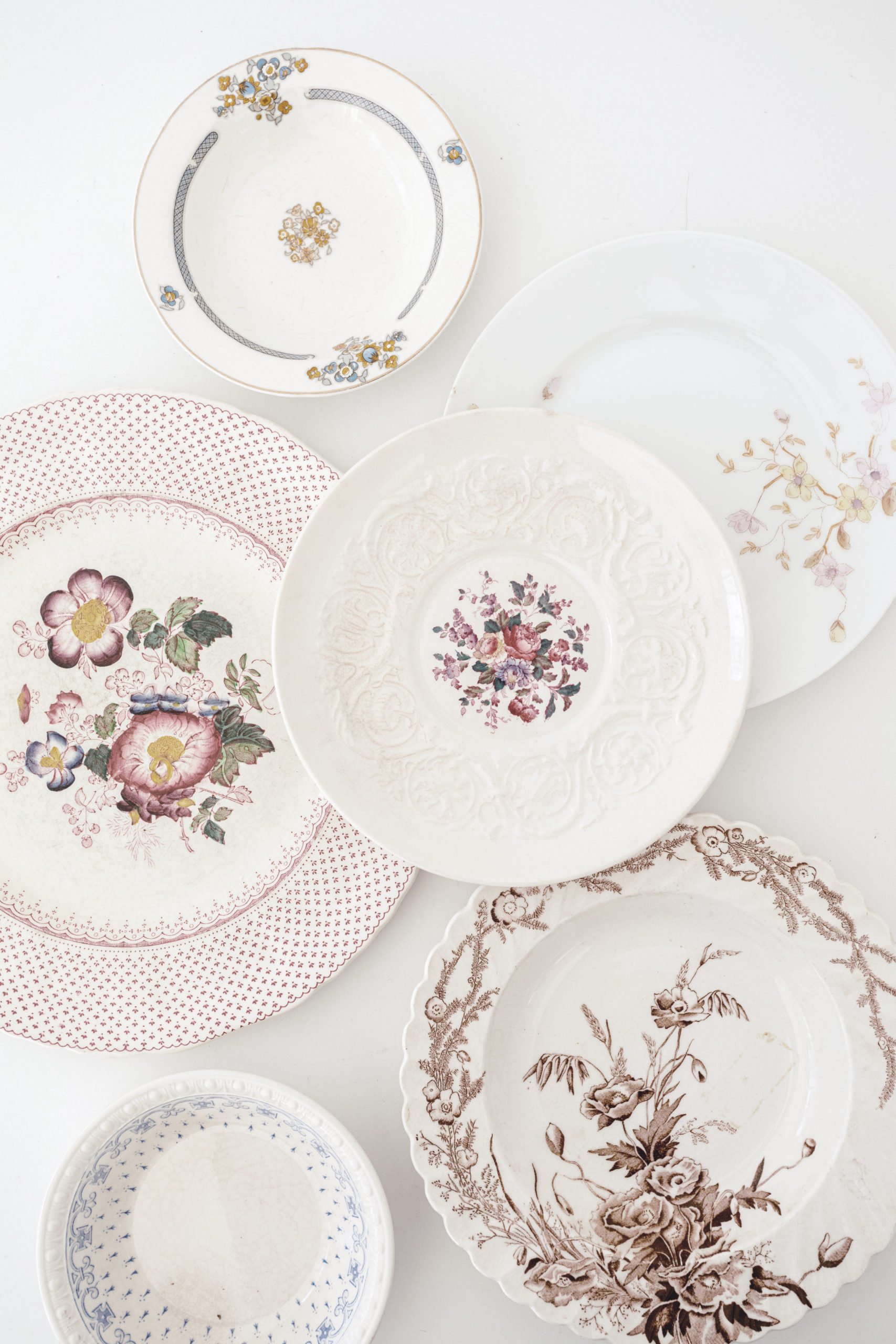

History of Transferware
In 1756 during the Industrial Revolution, the technique of transfer printing emerged in the Staffordshire region of England. Prior to the transferware process, pottery was hand painted, came at a high price, and was typically owned only by the upper class and royalty. As the demand rose from English customers for more affordable alternates to the hand-painted pieces, transfer printing techniques emerged. The new transferware pieces introduced to the market now allowed the middle and working classes to have painted pottery in their homes.
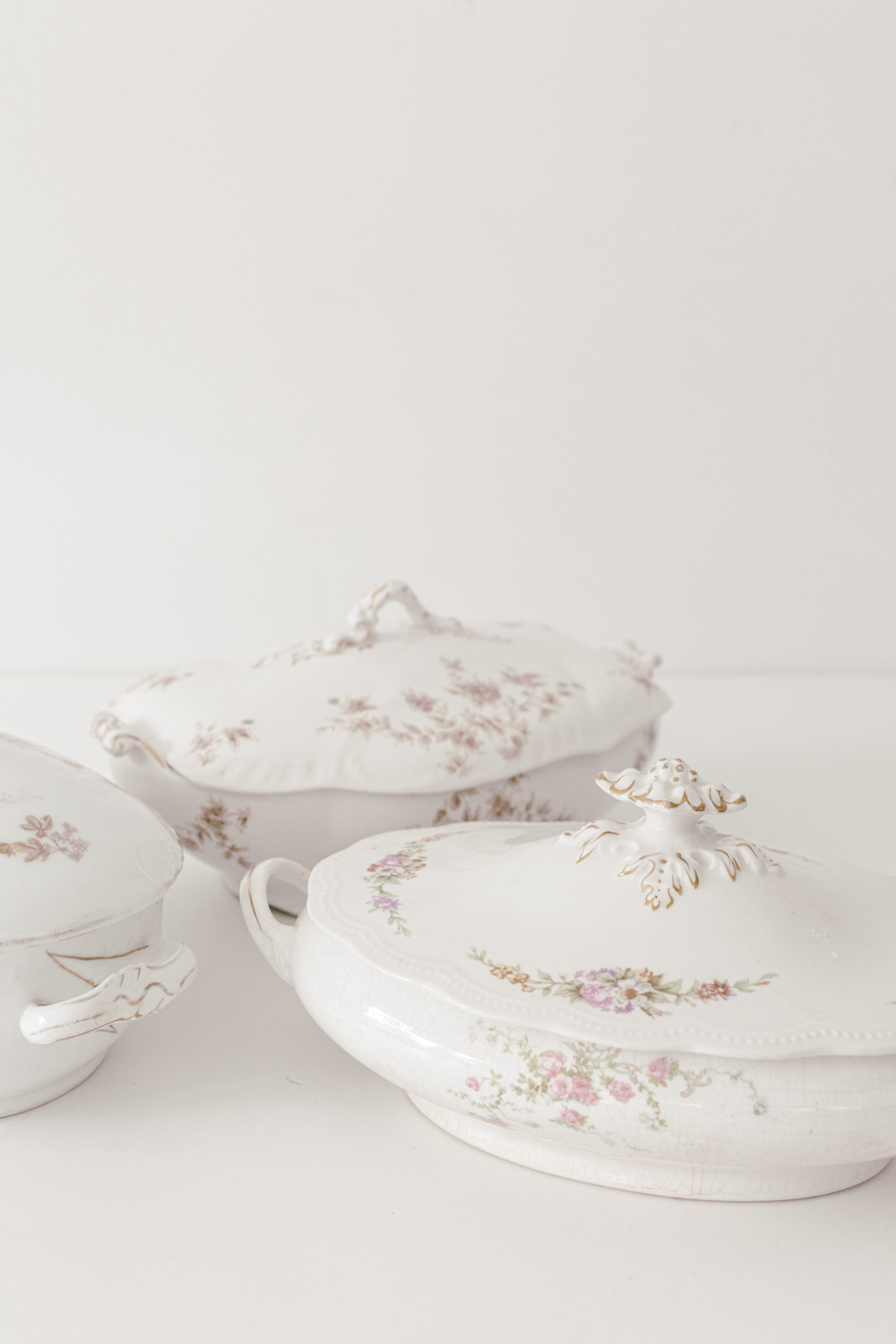
The technique of transferware started with a copper plate that was engraved with a desired pattern. Tissue paper and ink were then set onto the engraved copper plate and the tissue paper holding the pattern was transferred over to the ceramic piece. The pieces were then places into water or kilns to dissolve or burn off the remaining paper, leaving behind the design from the copper plate. To set the ink pattern, the transferware was fired in a kiln then covered in a glaze to protect the design.
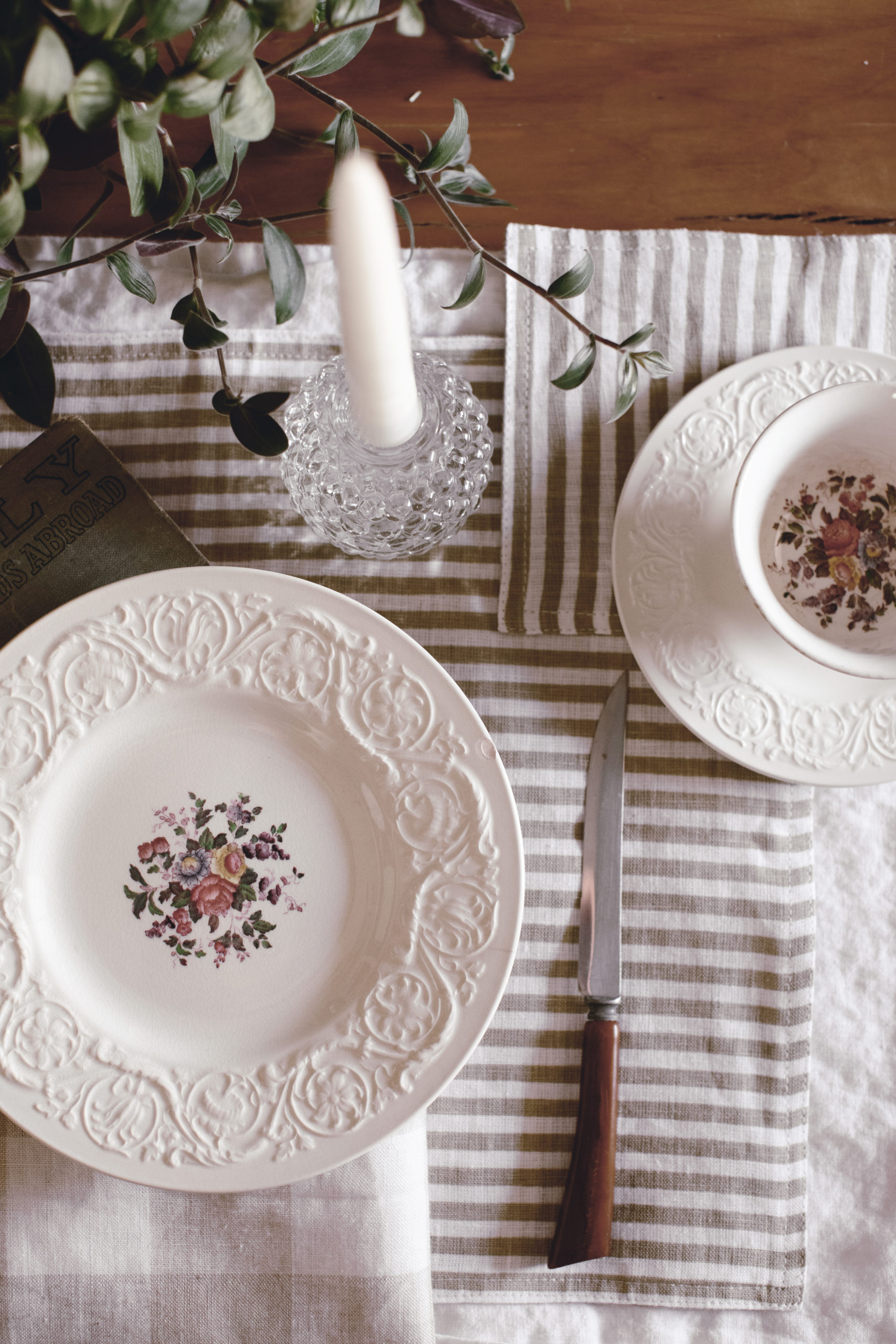

One of the most well-known patterns for transferware is Blue Willow. Blue Willow pattern was originally created in 1780 and has remained popular for over 200 years now. The patterns of the Blue Willow transferware most often depict motifs of Chinese scenes of hills, pagodas, pine trees, willow trees, bridges, boats, doves, and others. Blue Willow patterns are among the most popular patterns I see while out sourcing and are easy to spot.
Another popular pattern that was introduced in 1830 is called Flow Blue. This pattern is also very visual, easy to pick out among a collection of various transferware designs. In Flow Blue, the cobalt colored pigment appears to bleed outside of the lines for a smudged look. It is still argued today if this bled look was originally created by accident or intentionally. This Flow Blue, hazy look became increasingly popular in the US and carried into many other patterns over the years.
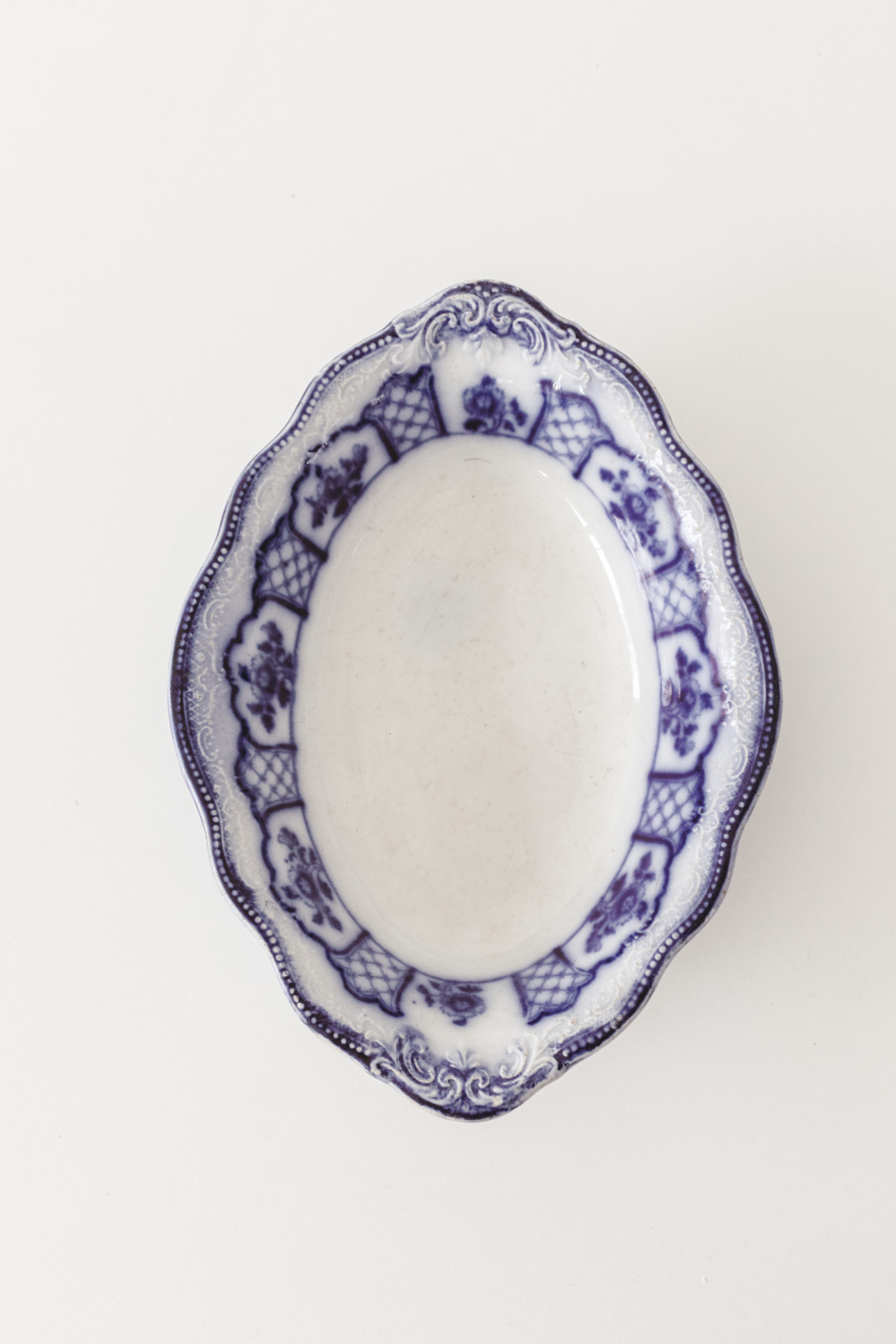
As mentioned, the design and look of transferware pieces has evolved over the years as new trends emerged, laws were created, and processes were developed. Rare to find, teacups without handles for drinking phases out in the 1800s. Though some were still created without handles, this is a prime example of the phasing in and out of designs. Additionally, new technology and processes introduced transferware that’s dishwasher safe in 1955, increasing the ease of use of these pieces in the everyday home.
It is easy to go on all day about the interesting history of transferware pieces, I highly encourage you check out these resources for more details on the history of this art.

Popular Transferware Brands & Makers
Throughout history, there have been many brands and makers of transferware that have come and gone. There have also been a few that have stood the test of time, making icon designs and pieces still sought after today. Among these classic makers are Johnson Brothers, Spode, Wedgwood, and Ridgway.
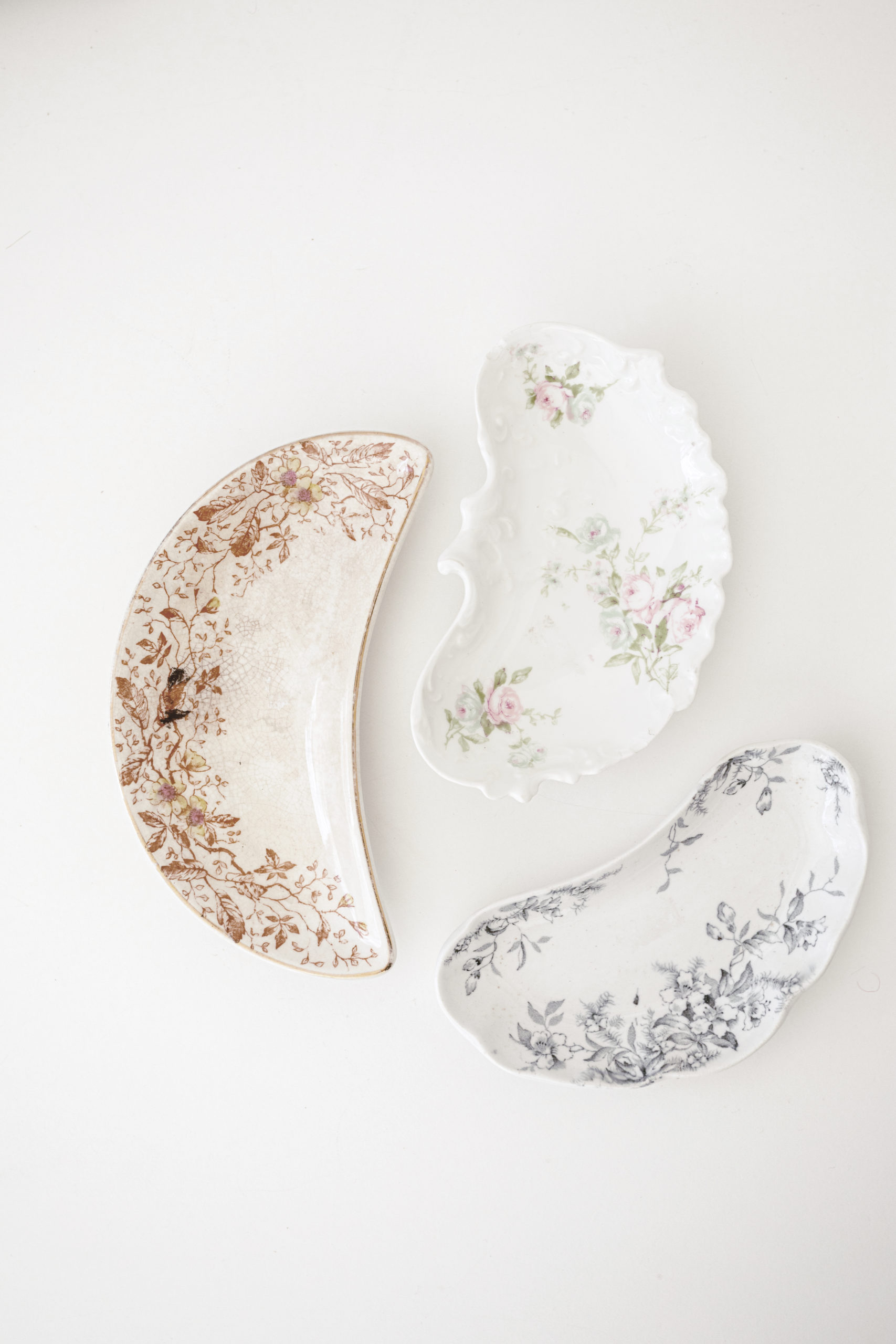
When looking at vintage transferware, a key place to spot check is the underside of the piece. These undersides show a mark or back stamp identifying the maker, pattern, and year (or decade) of its manufacturing. These markers marks were mandated in 1891 by the McKinley Tariff Act, requiring the country of origin to be printed to the back of transferware pieces. The dates listed on the back of transferware can often depict the year the specific pattern was introduced, not the date the actual piece was created. The back marks for many of the companies have evolved over the year and can be an identification of the history of the pieces you have or find. You can refer to online databases or these books to get into the specifics of each mark. A first impression rule-of-thumb I have learned is that older marks were made smaller than newer marks.
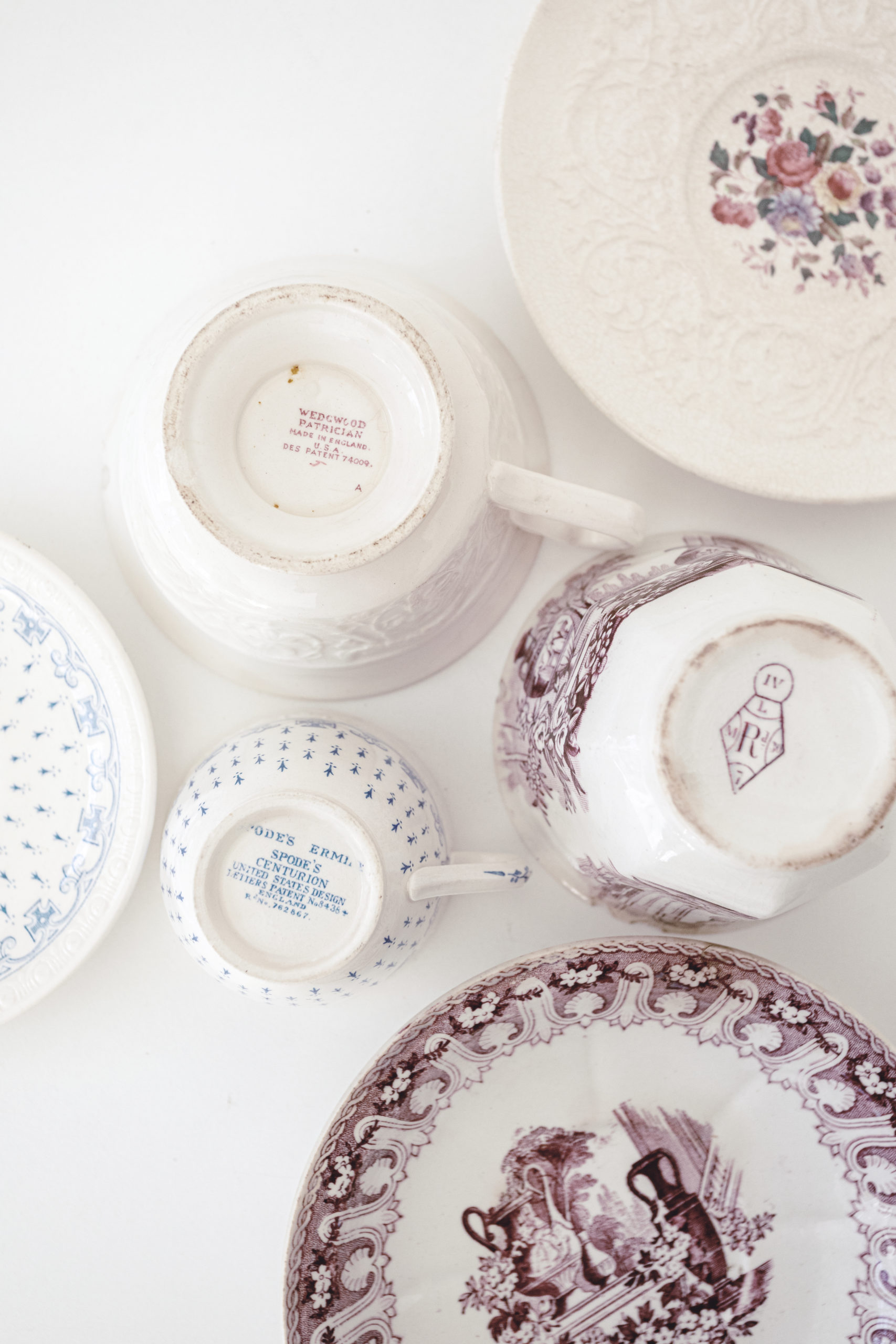 Though each brand of transferware is known for their unique patterns and details, there are popular patterns and colors that have been used over time in transferware pieces. Most of the early patterns were made in blue, brown, or red, but other popular colors included purple, mulberry, black, green, cranberry, and grey. The most rare color to find in transferware is yellow, as there were very few authentic transferware pieces created in the color. The color of transferware is another aspect I keep an eye out for when sourcing; two-toned pieces were introduced later on in the transferware process unless the second color was hand painted after the first transfer.
Though each brand of transferware is known for their unique patterns and details, there are popular patterns and colors that have been used over time in transferware pieces. Most of the early patterns were made in blue, brown, or red, but other popular colors included purple, mulberry, black, green, cranberry, and grey. The most rare color to find in transferware is yellow, as there were very few authentic transferware pieces created in the color. The color of transferware is another aspect I keep an eye out for when sourcing; two-toned pieces were introduced later on in the transferware process unless the second color was hand painted after the first transfer.
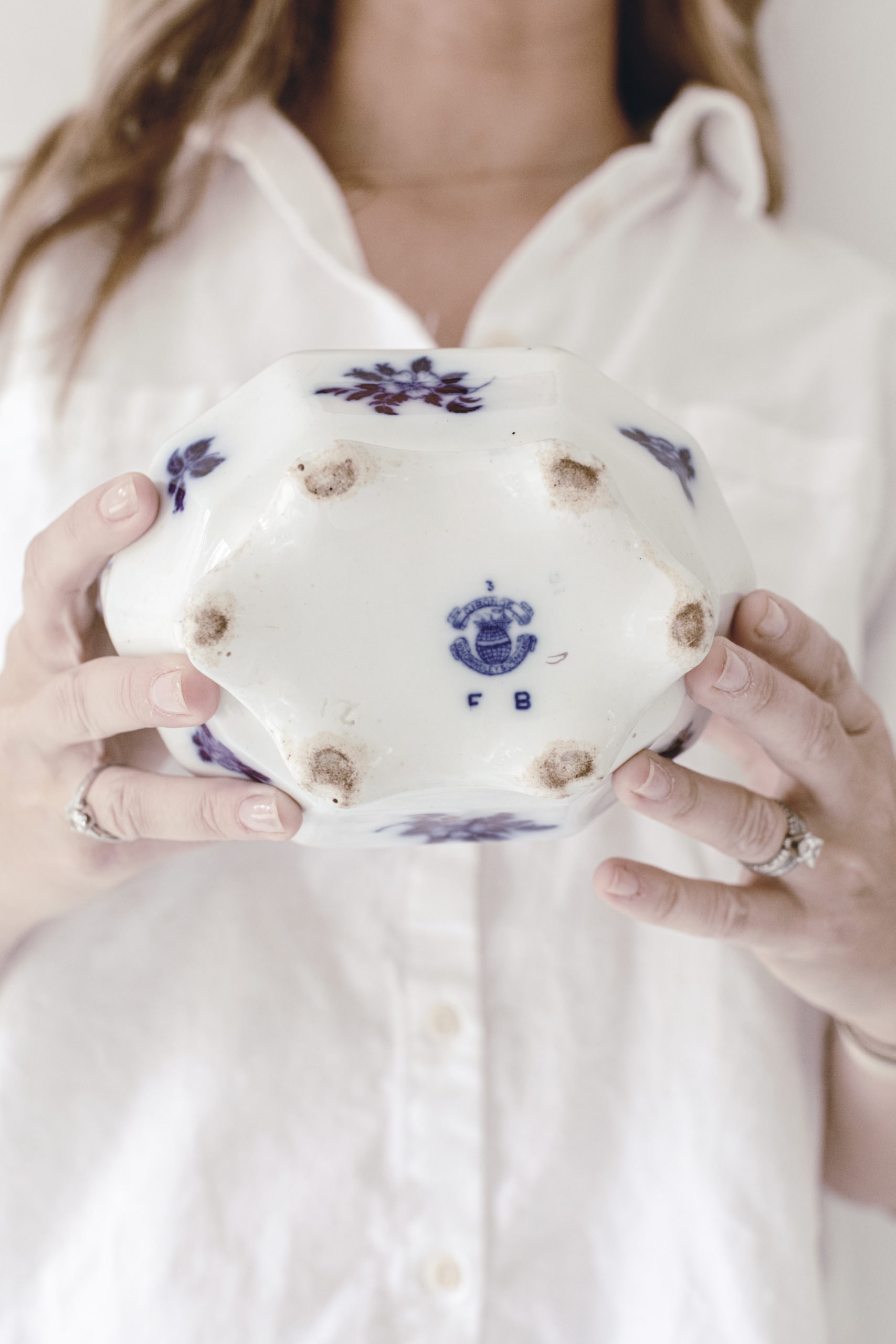
Johnson Brothers
The Johnson Brothers was founded in 1883 by four brothers named Frederick, Alfred, Henry, and Robert Johnson. They got into the transferware business from their grandfather who was a famous English potter of the time. The Johnson Brothers became very successful in the industry when the brother, Robert, took a leg of the business to New York City.
In the 1950s, Queen Elizabeth II granted the “Queen’s Award to the Industry” in recognition of the Johnson Brothers contributions to the economy. The Johnson Brothers later became partners with the Wedgwood Group in 1968 and ended production of their products in 2015.
Spode
Spode is a popular transferware name that is still being made today. This is probably one of my favorite transferwares to find when I am out sourcing due to their iconic patterns and colors. Spode continues to re-release their old patterns today. Among their most well known styles are Blue Italian, Christmas Tree, and Blue Room Series.
Spode was started in 1776 in England by Josiah Spode I next to his friend Josiah Wedgwood, another popular name in transferware. Like traditional transferware, each Spode piece was produced on bone china with ink transferred from an engraved copper plate. Over the years of business, Spode’s ownership changed hands multiple times, causing their production location to change too. Today, Spode is acquired by the Portmeirion Group and is created in a factory close to its original factory in England.
Wedgwood
The history of the Wedgwood brand is one that I find super interested. The Wedgwood company started in the transferware business as a way to promote their family’s ivory creamware. The founder, Josiah Wedgwood, used many of the modern marketing and sales techniques used today to promote the family business. These techniques included direct mail, celebrity endorsement, illustrated catalogues, and many others.
Over the years of the company, Wedgwood has spearheaded the industry with the marketing techniques they used as well as the invention of new materials. One of Wedgwood’s most popular inventions is Jasperware which led to the popularity of the expression “Wedgwood Blue.” Wedgwood is a brand that can be found being used all over the globe throughout history by Monarchs, the Vatican, prestigious hotels, and the White House.
Today, Wedgwood continues to keep the traditional creation of their transferware pieces alive through 10 year apprenticeships at their factory.
Ridgway
Ridgway is another popular transferware brand that was started in England in 1792. Starting as a family business, the company was split multiple ways, ultimately expanding the brand into new markets outside of England and into the US. Ridgway transferware was historically known to be used by the middle and upper classes with their early works remaining unmarked. Their most popular patterns included motifs of flowers, landscapes, neoclassical design, and Chinese design.
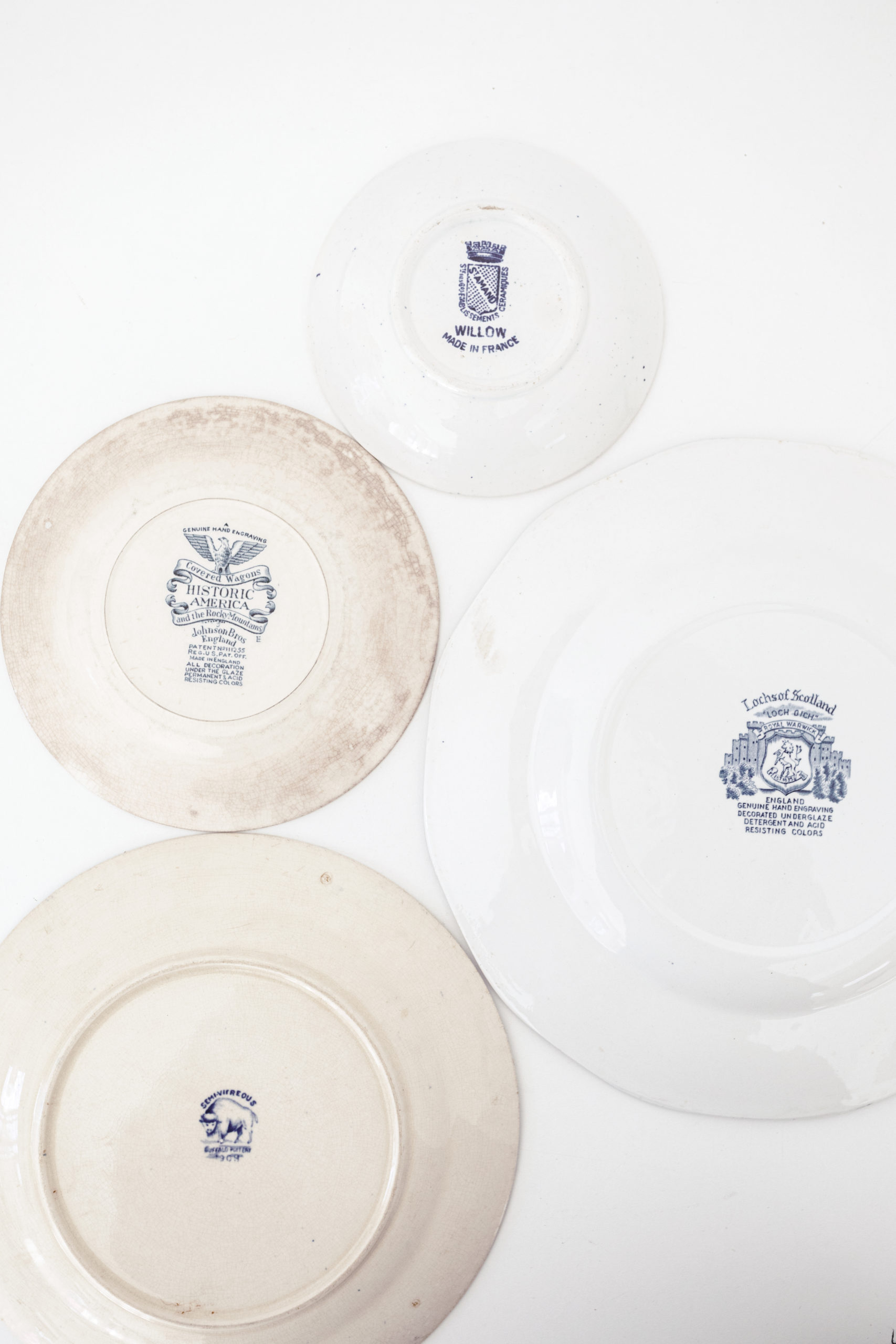
Sourcing Vintage Transferware
When looking for vintage transferware, source what you are drawn to! That is my best tip for sourcing any vintage piece. If you’re sad when you leave it behind and can’t stop thinking about it, you probably should get it. A lot of people source by pattern, sometimes it’s a pattern they just love, a pattern their parents or grandparents once had that they have fond memories of, or sometimes it is one they have inherited and may have missing or broken pieces of over the years.
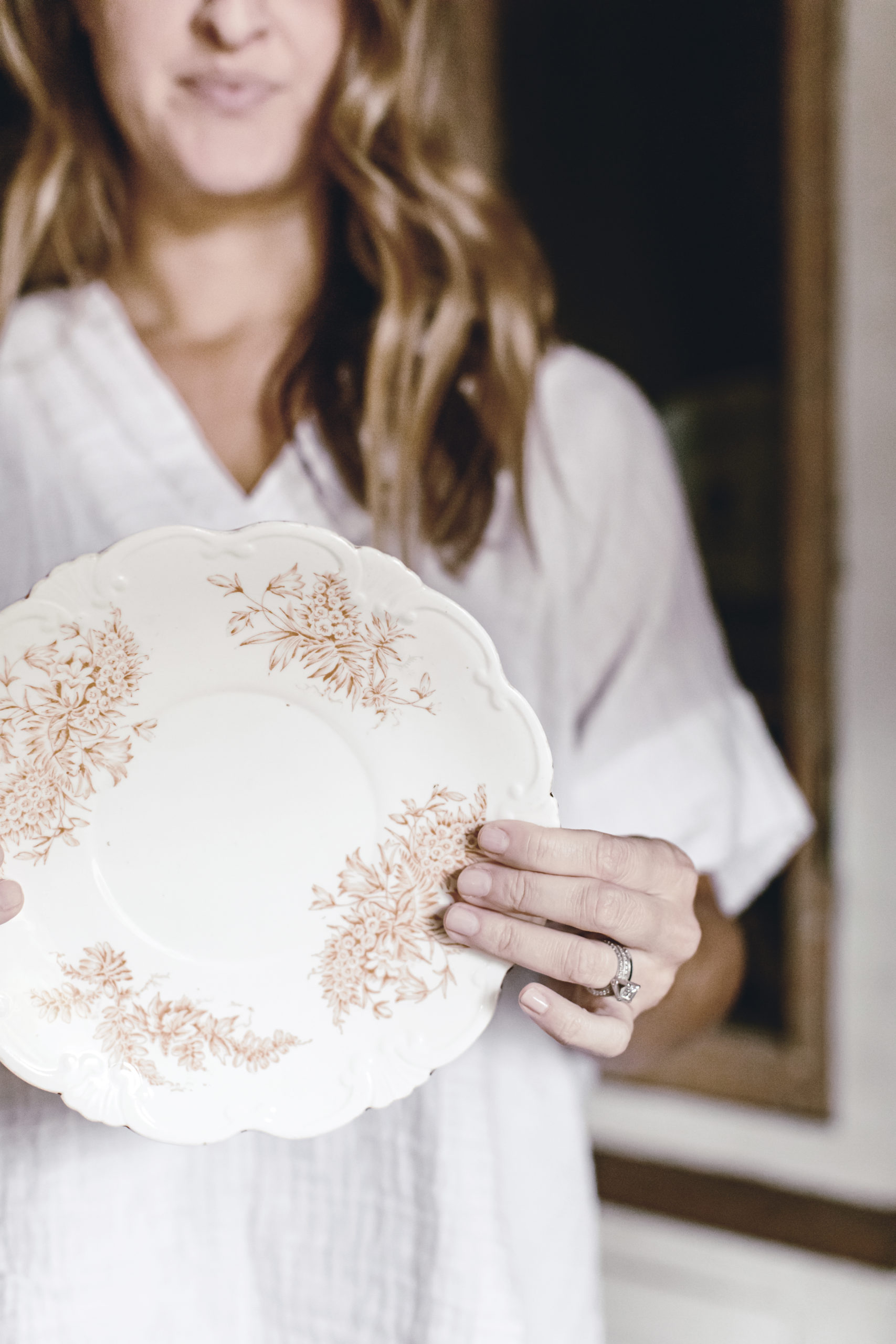
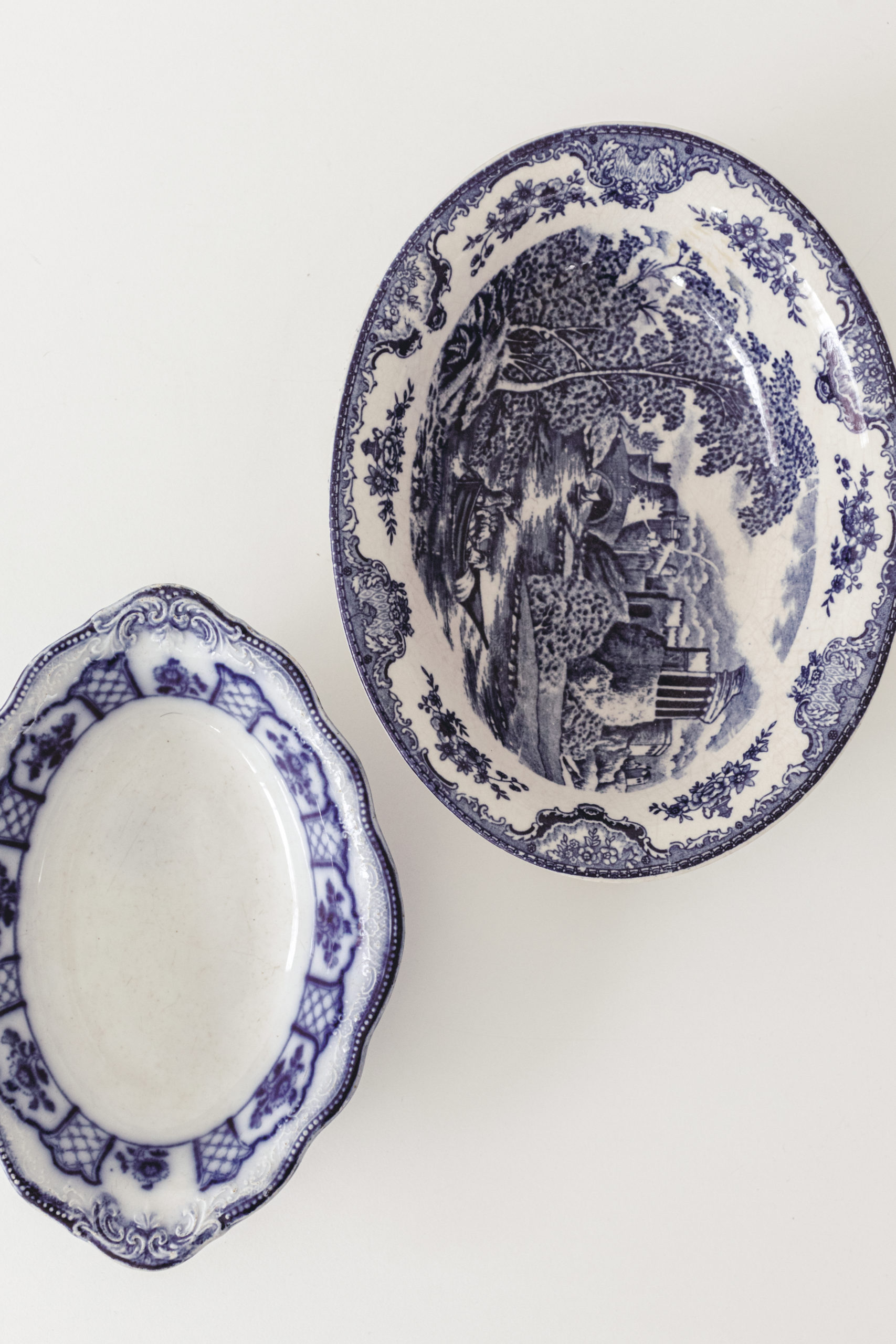
Some pieces are harder to find than others, some lend themselves to break more easily (like teacup handles or lids for covered serving dishes). Some patterns are also harder to find, discontinued, more rare etc. and thus more expensive.
Goodwilll and estate sales are probably the best places to find transferware sets. You may be shocked at what a great price point you can find them at. You can also check Etsy or our Vintage Goods Shop which have a great assortments. One of my favorite places if you’re looking for something specific is Replacements, Ltd. Replacements has been my go-to recommendation for sourcing missing transferware pieces. Whether you are looking to replace a piece from an inherited set, or are sourcing for a specific patter, this is a wonderful place to look.
Caring for Vintage Transferware
Caring for the transferware pieces you bring into your home is important, but not extensive by any means. Though it has become so easy to clean up after a meal with our trusty dishwashers, I must recommend that you take the extra time to hand wash your transferware pieces. Because most pieces you find are older, the patterns transferred on them are more prone to fading when they are put in the dishwasher. When you wash by hand, it is fine to use normal dish soap with a nonabrasive sponge, but aim to avoid hot water.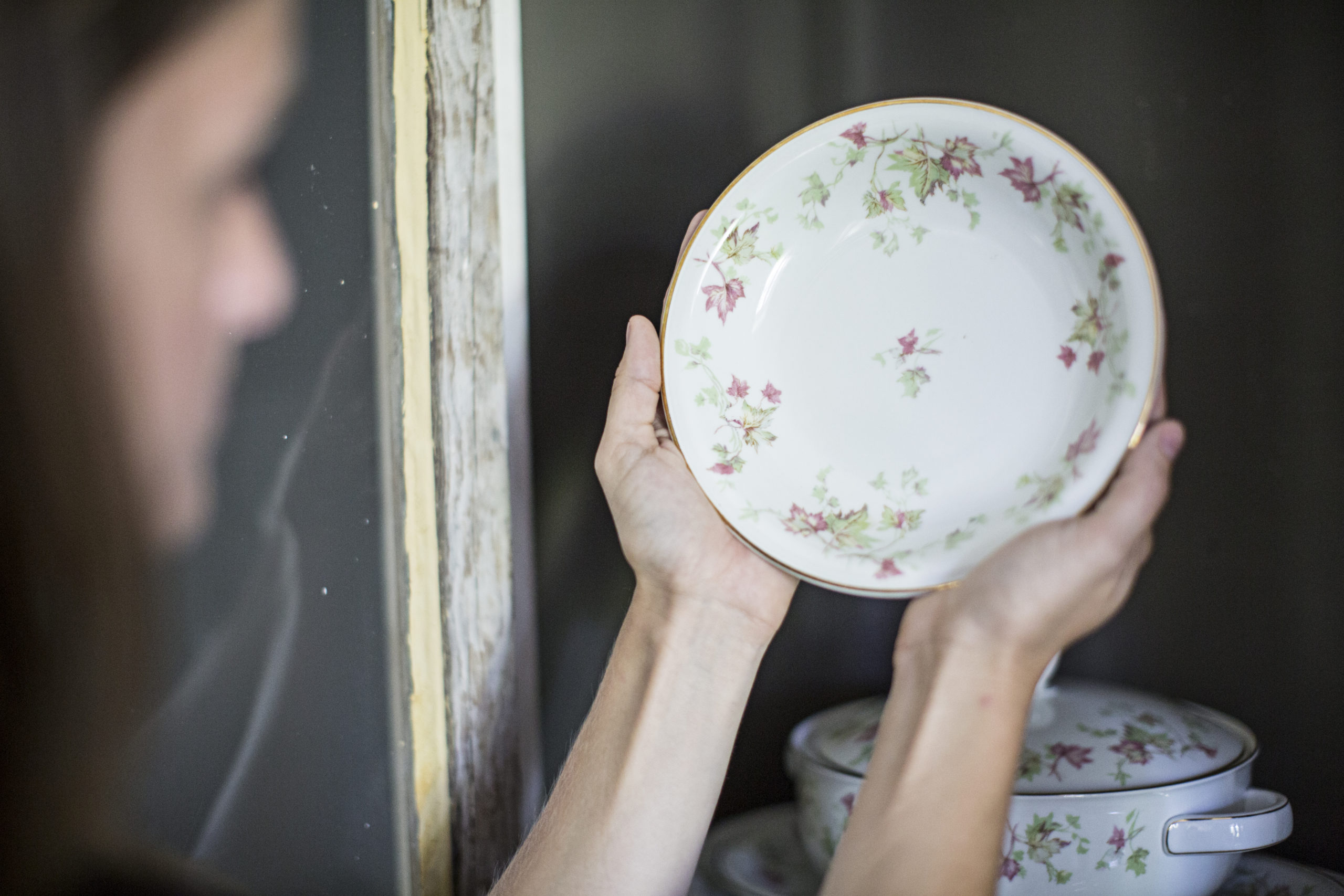
To remove any light staining on your transferware pieces, you can create a paste with vinegar and baking soda to apply to the stains. Let this paste sit for a while, then remove with warm water. To avoid future staining of your pieces, do not store transferware in newspaper, as the ink can transfer onto your pieces. Instead, store your transferware in bubble wrapping or old towels and store in a temperature-controlled space.
If you have your vintage transferware out on display, I would recommend you dust the pieces every 6 months or so. Removing the dust that compiles on your vintage pieces will help preserve them.
Vintage Transferware in the Home
Whether serving a brunch for my girlfriends, decorating a hutch, or storing my jewelry at night, I love using vintage transferware around my home. I find that it is such a unique and easy way to decorate and style your home. To offer a few examples on how I have styled these pieces in my home, here’s a list:
- I have my Grandmother’s China styled in my China cabinet. I have hung the tea cups on hooks from a shelf in the cabinet beside a stack of the plates and a picture of my Grandmother.
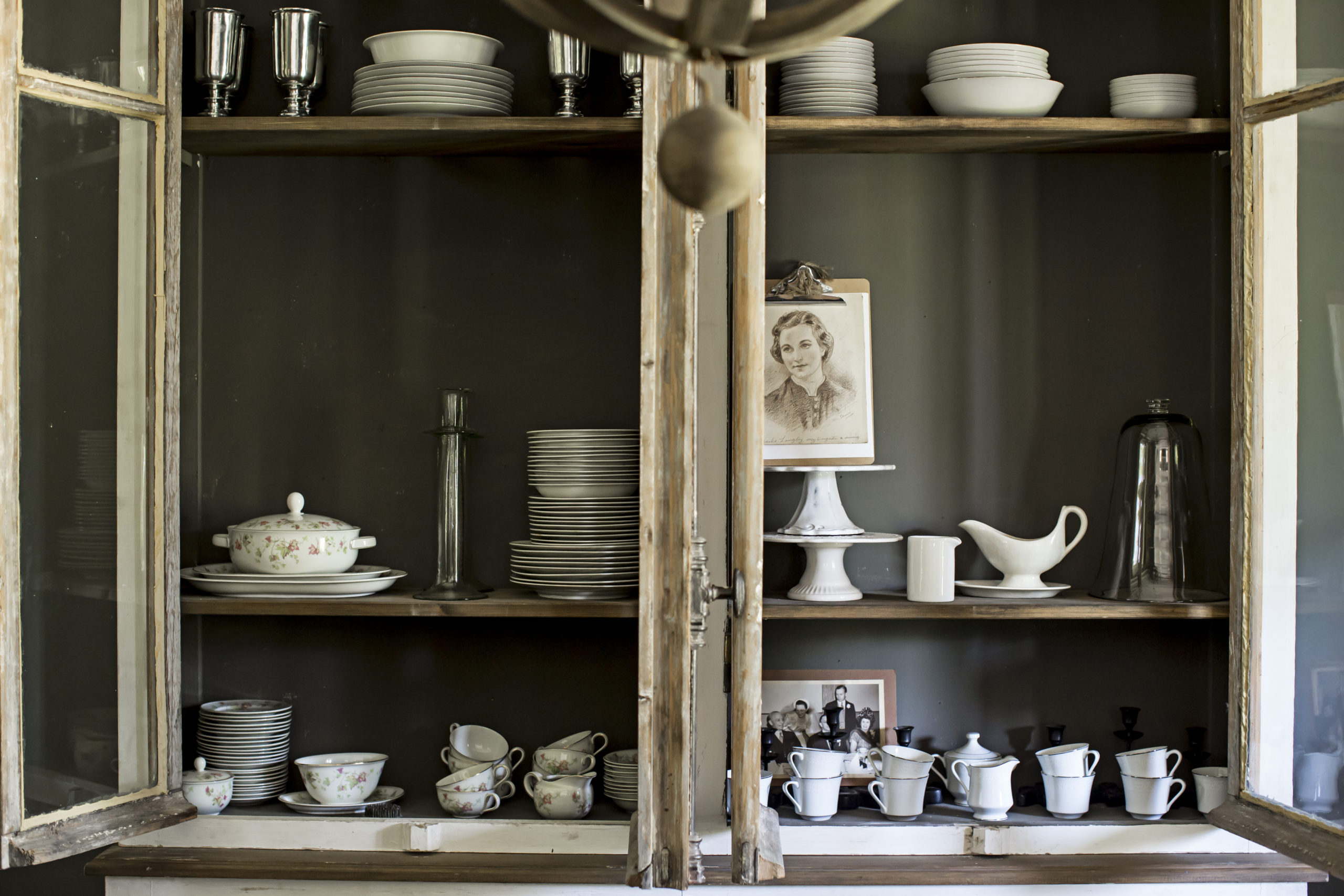
- On my kitchen counter, I use a one-off transferware cup I found to hold vintage spoons I use to stir my coffee in the morning. I have had so many people visit my home and notice this little detail!
- A super easy and common way to style the beautiful plate you own or find is on a wall with plate hangers. I love the look of mix-matched plates scattered decor on a wall.
- Often, I pull a transferware pitcher from the shelf to hold a fresh bouquet of flowers on my kitchen table or counter top.
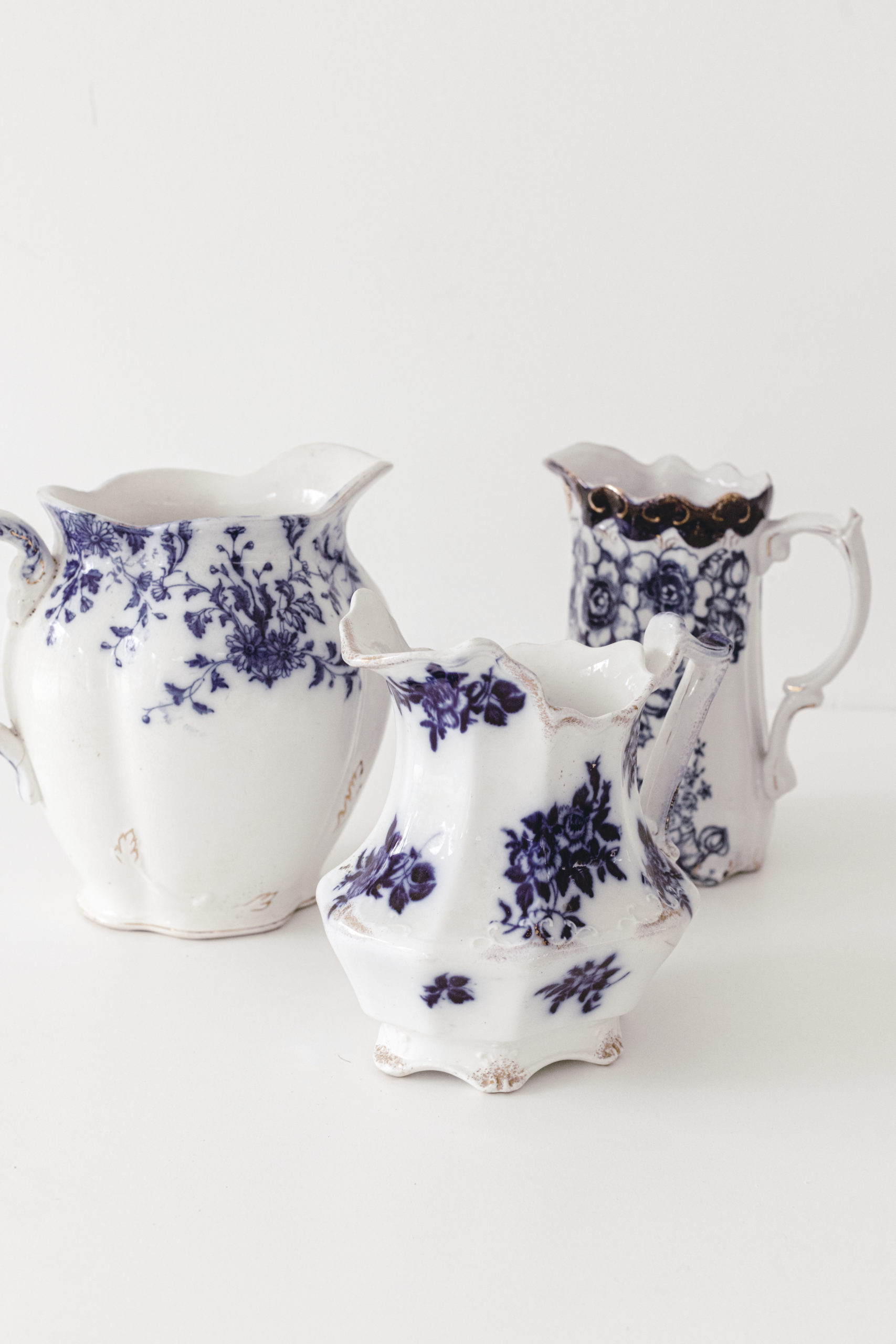
- I often use transferware when setting the table. I love the mix-and-matched look of different sized and patterned transferware pieces on the table if I do not have a complete set. I am thrilled to see this look on the rise again with the grand-millenial trends.
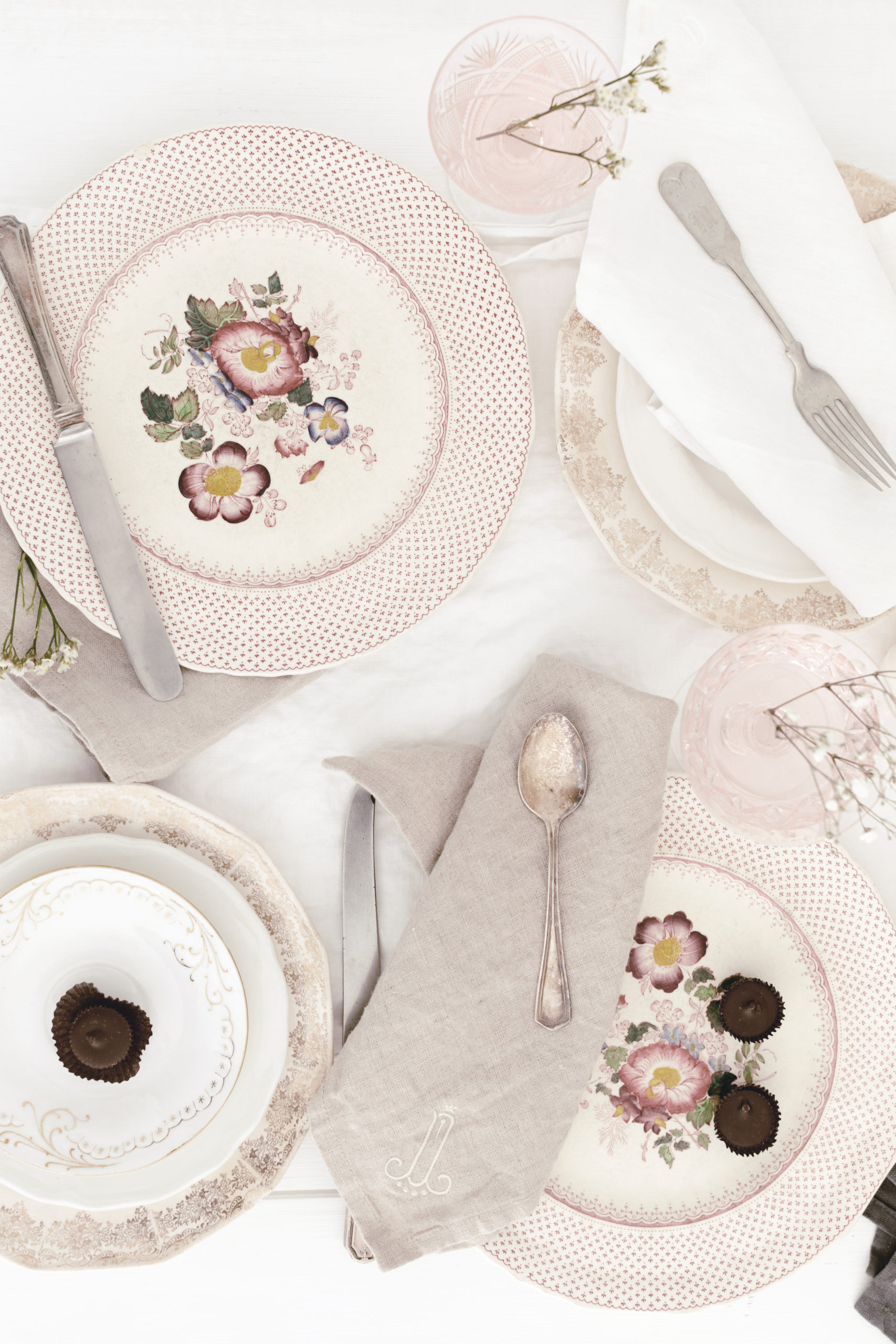
- My kitchen counter is currently styled with an Orchid I replanted in a transferware soup tureen. This was a super easy project that added a touch of detail to my kitchen effortlessly.
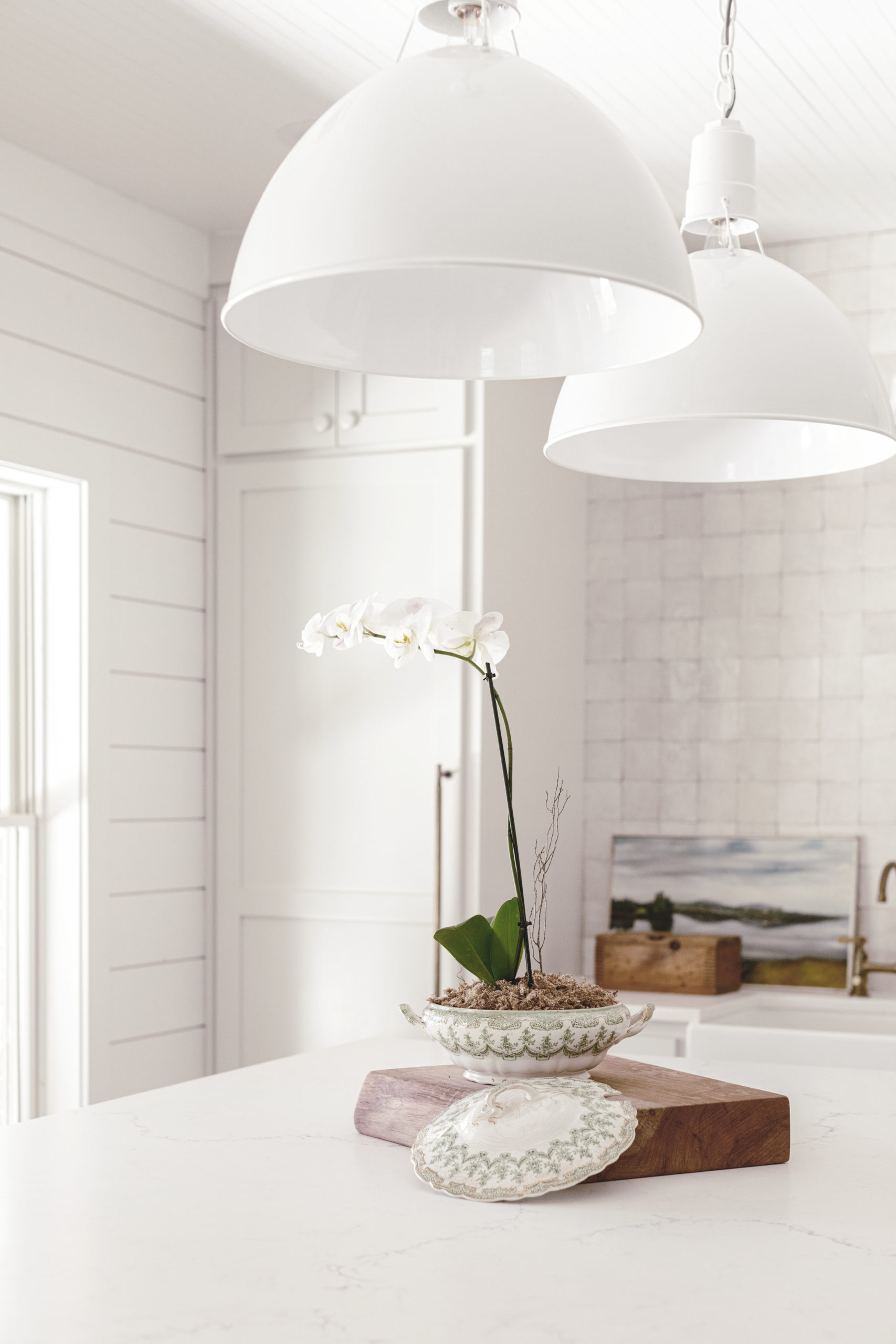
- I have many, MANY, transferware trinket dishes around my house. I use them in my bedroom to place my jewelry on at the end of the day, in my kitchen as a catch all dish for keys and change, on my side table for the randomness of life, next to my stove as a spoon rest, honestly, the list can go on all day.
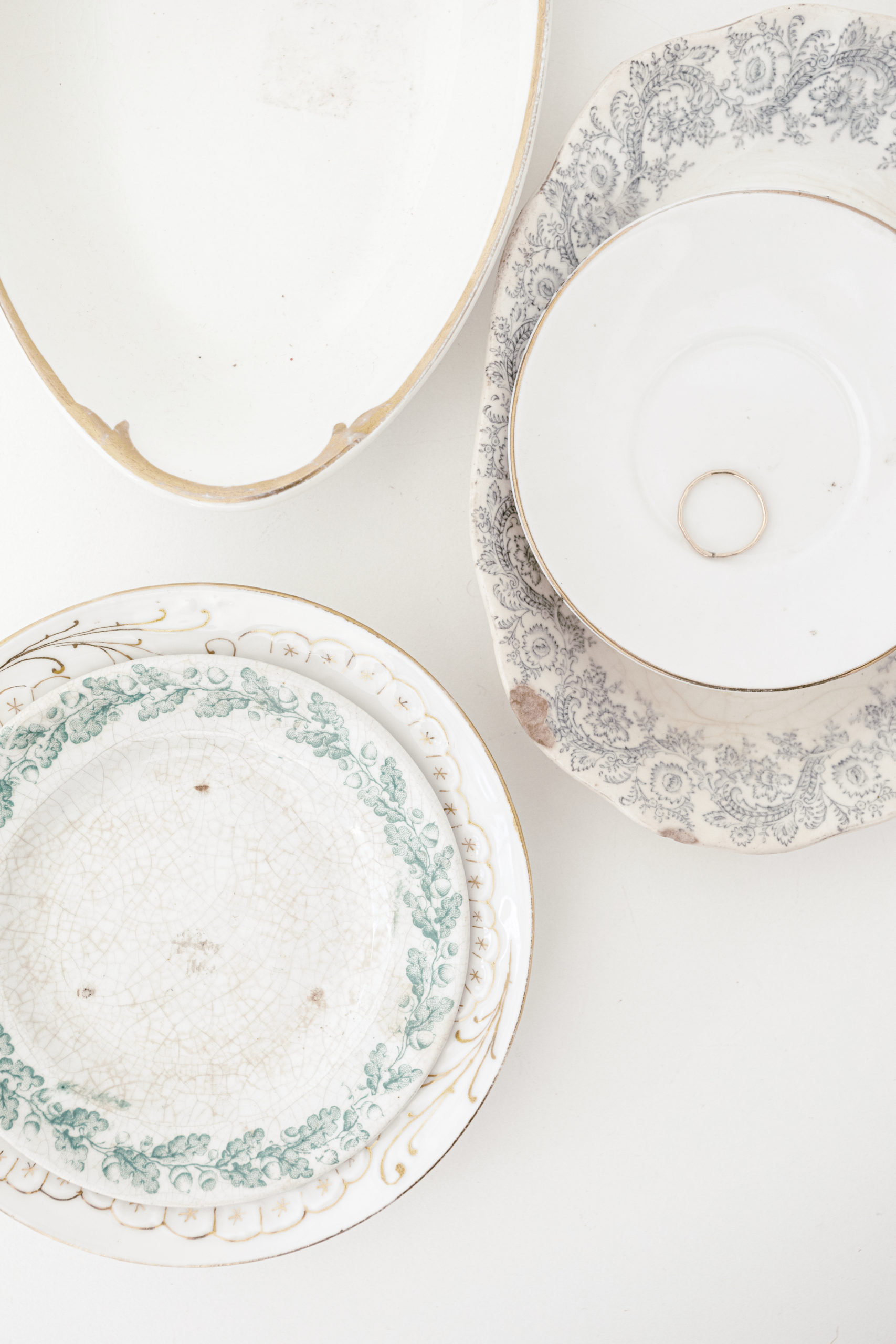
I love finding new ways to style transferware in my home. I have gained inspiration from how others have styled their homes but love when a piece catches my eye in an antique shop and inspires a new idea organically. I would love to know how you are using sourced and inherited transferware in your home. If your transferware has a particular memory or heritage to it, please share it with me @heirloomedcollection on Instagram.
Shop the Post
Here is a quick round up of resources for vintage transferware.
heirloomed is a lifestyle brand with a mission of “keeping heirlooms around for another generation.” Our blog features stories about family recipes, creating traditions with your family, interior design and entertaining by mixing new and vintage pieces, classic style, and small town + historic travel. Our shop features a collection of “goods inspired by the past, for generations to enjoy” with an array of products and meaningful gifts including linen aprons, tabletop linens, art, ceramics and beyond. Learn more at www.heirloomedcollection.com.


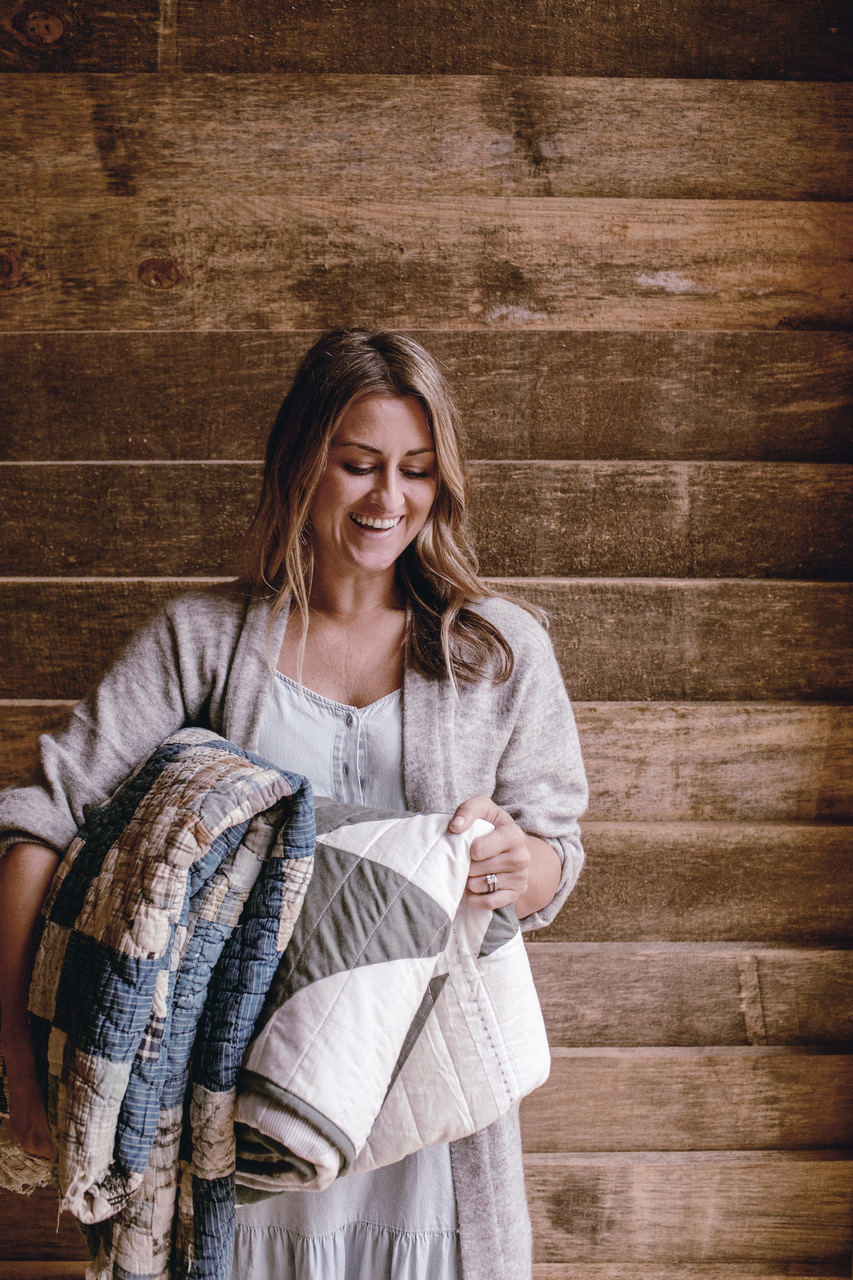
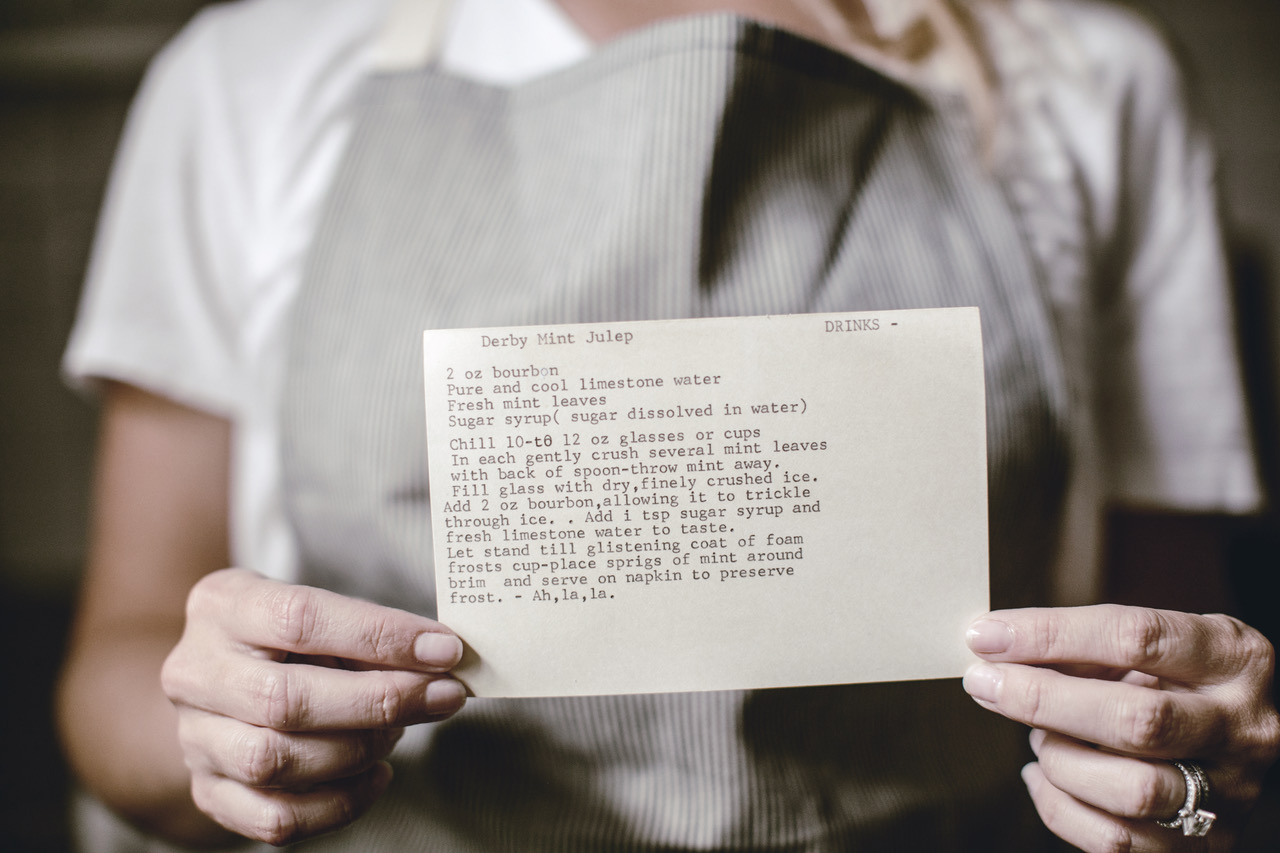

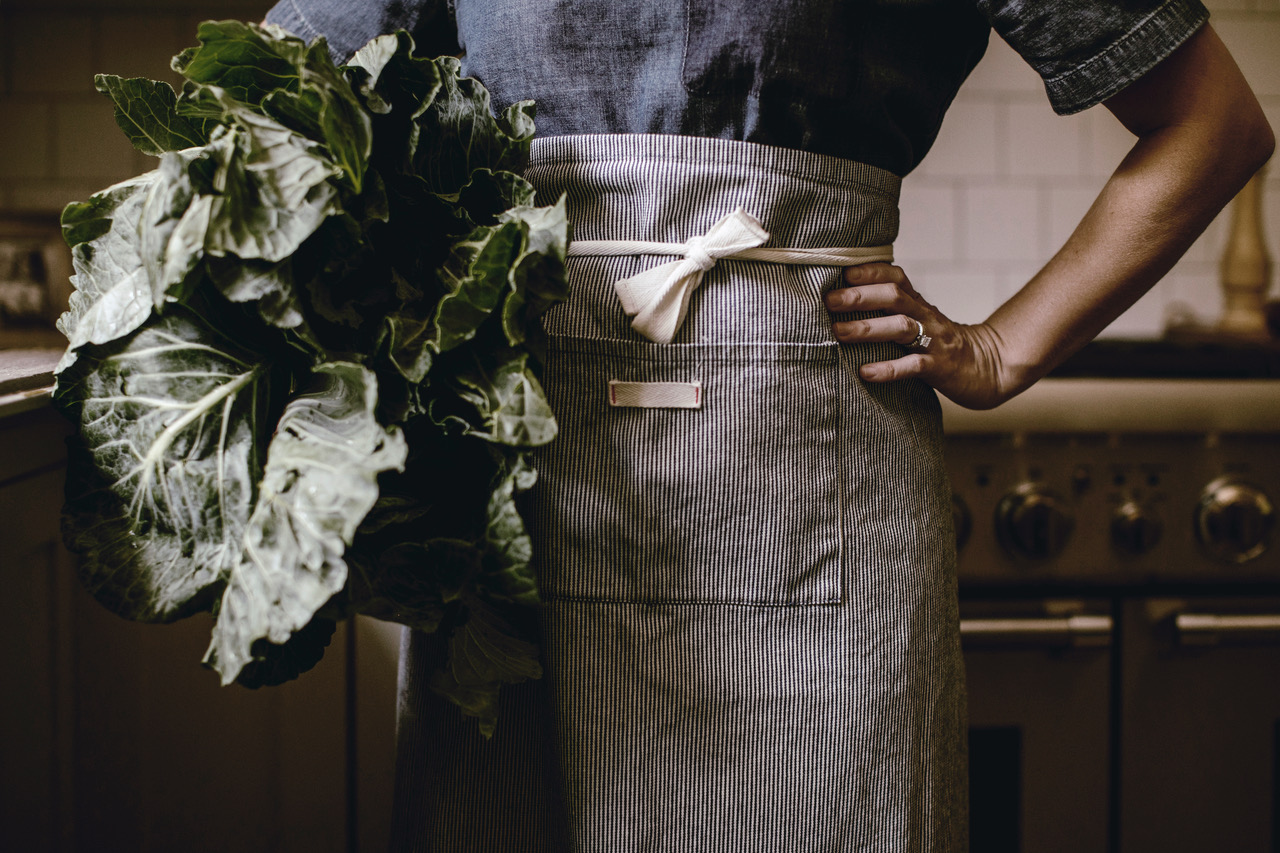
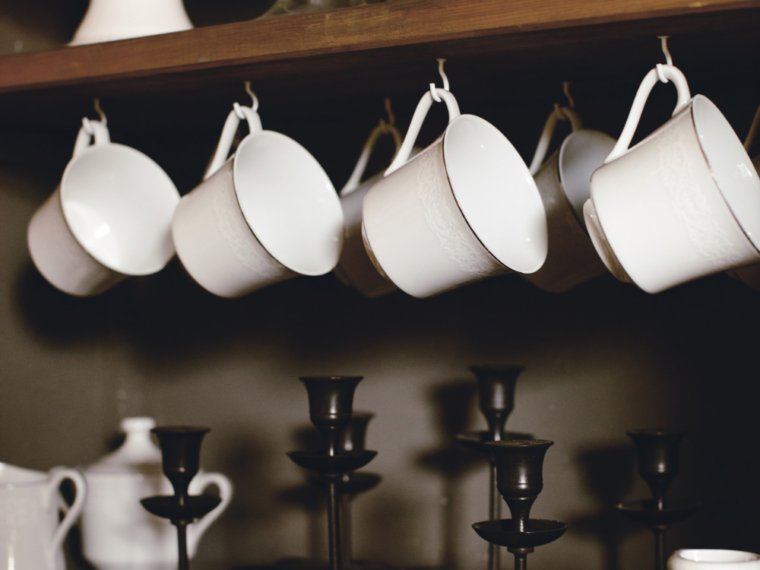
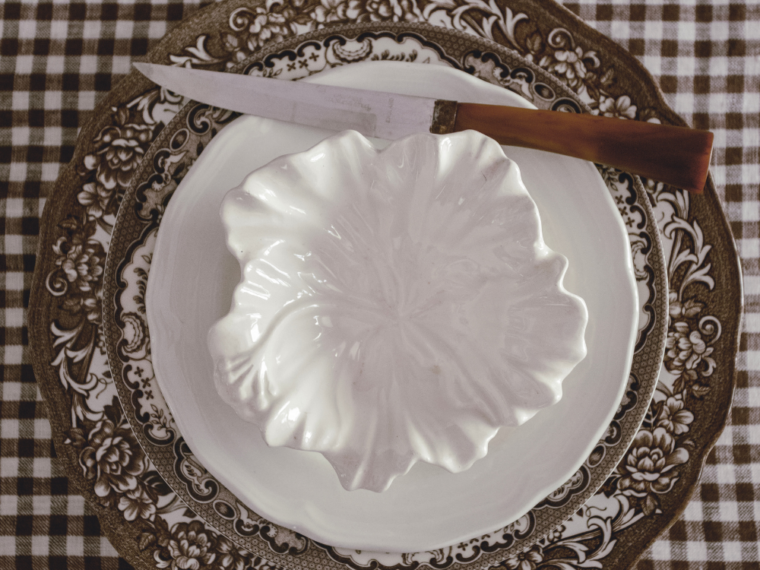
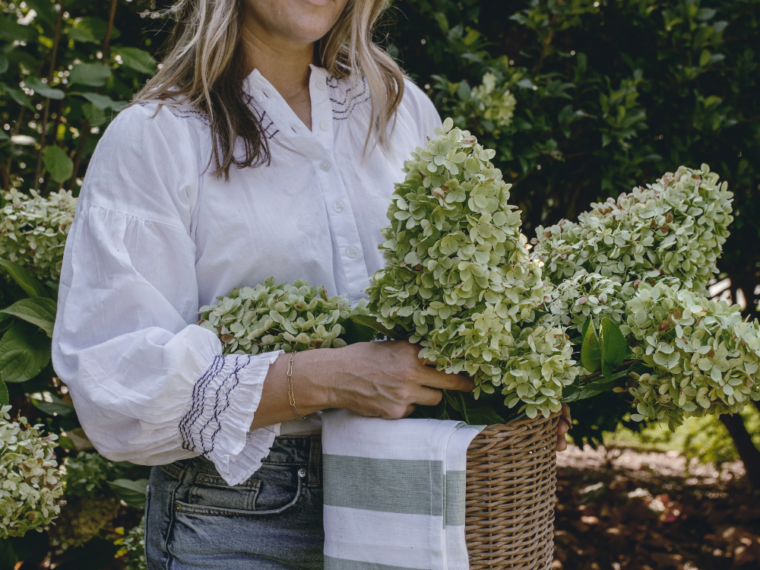



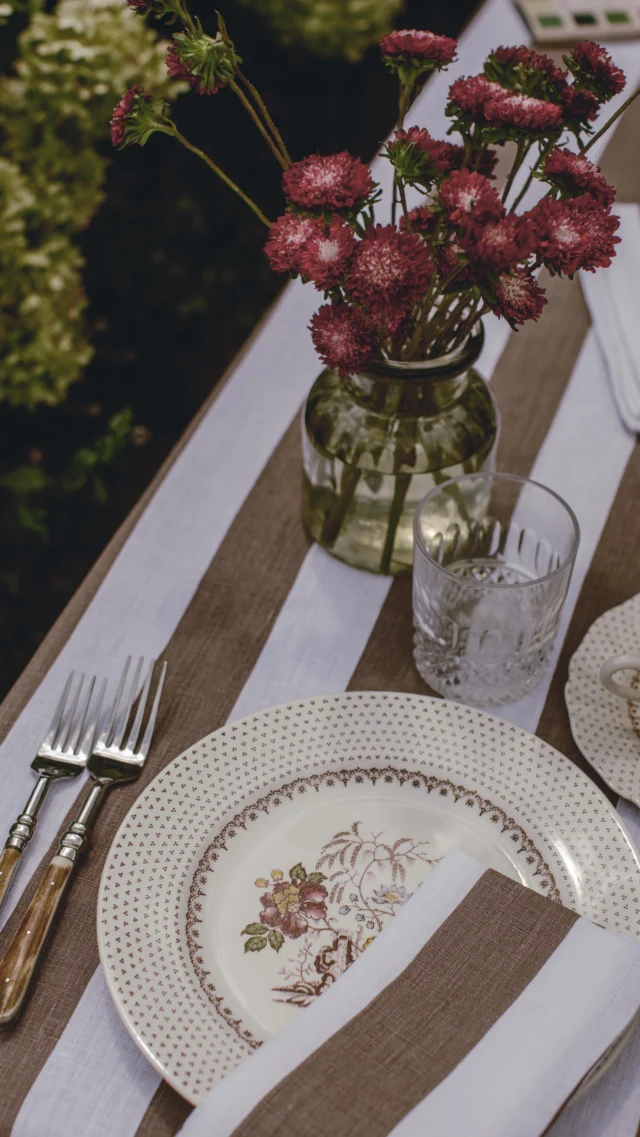
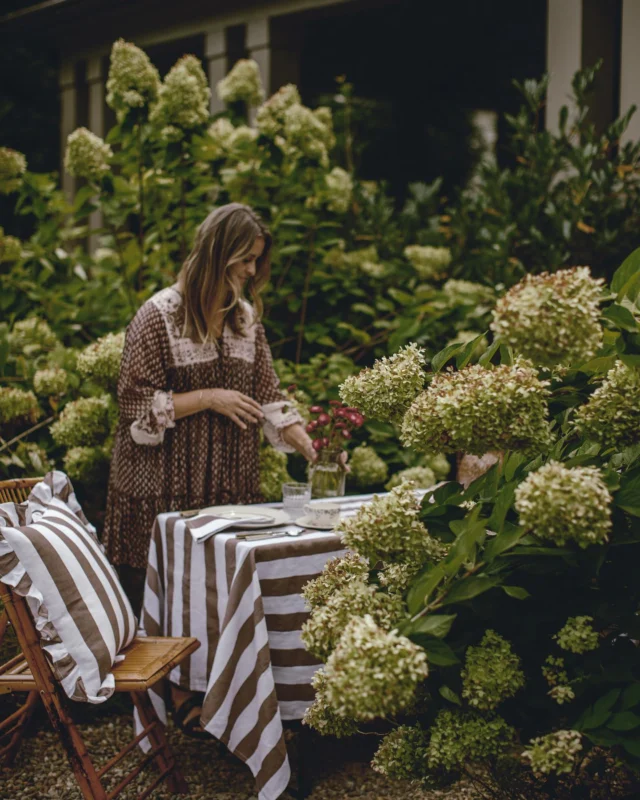
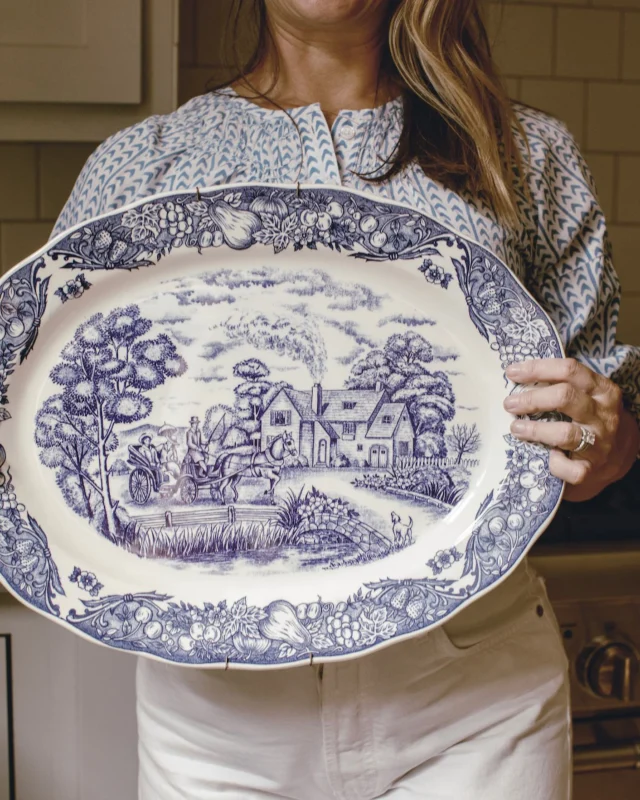


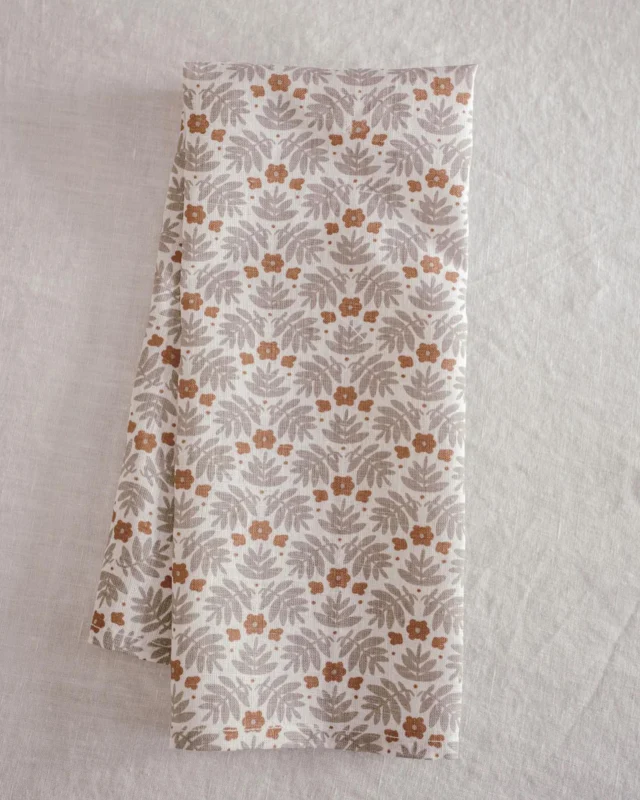
Recent Comments